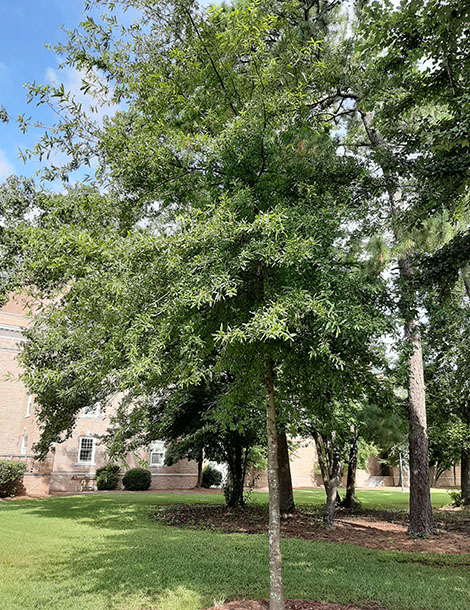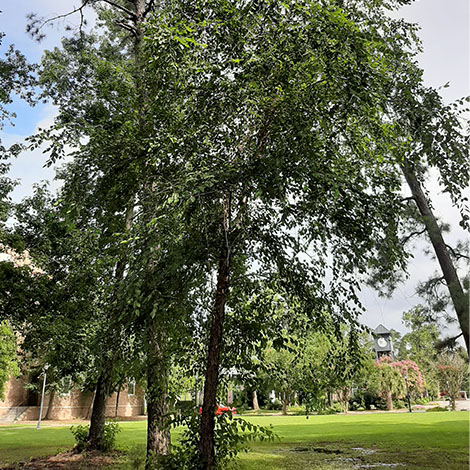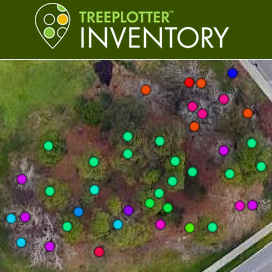CCU Arboretum
Willow Oak
Common Name: 
Willow Oak
Scientific Name:
Quercus phellos
Species Range:
The willow oak is native to eastern and central United States ranging from New York to the panhandle of Florida and over to eastern Texas, Oklahoma, and southern Illinois and Kentucky. It can be found in wet lowlands, river floodplains, and richer upland soils.
Growth Characteristics:
The fast-growing deciduous willow oak reaches heights of 90-100 feet with a dense oval shaped crown. Its leaves are narrowly elliptical with a bristle tip and are 5 inches long, 1 inch wide. Its bark is smooth grayish brown and becomes dark gray and rough with shallow fissures as it ages. The yellowish-brown catkin flowers appear in the spring while its fruit, an acorn, matures in the fall and gets no bigger than ¼ inch to ½ inch long.
Ecosystem Service Value:
The acorns of the willow oak are a primary fall food source for many animals.
Uses, Other Details:
The biggest use for the willow oak is as a shade tree along streets due to their fast-growing rate
Threats:
Willow oaks are susceptible to a large number of diseases, including oak wilt, chestnut blight, shoestring root rot, anthracnose, oak leaf blister, cankers, leaf spots and powdery mildew. Potential insect pests include scale, leaf miner, galls, oak lace bugs, borers, caterpillars and nut weevils.
Species profile by Billie Rogers
References:
Kirkman, L. Katherine., et al. Native Trees of the Southeast: An Identification Guide. Timber Press, 2007.
“Willow Oak Quercus phellos.” Arbor Day Foundation, https://www.arborday.org/trees/treeguide/TreeDetail.cfm?itemID=1202. Retrieved November 15, 2020.








